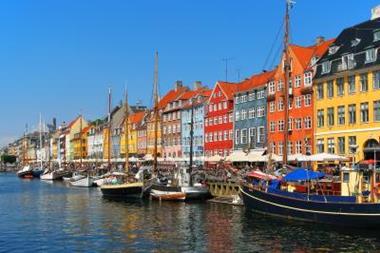The economic crisis is a unique window of opportunity to change our current, highly unsustainable energy path, says energy chief
“While the details of a binding agreement may not be completely worked out in Copenhagen, it is more important than ever that participants send a strong, indicative and ambitious signal that can guide energy investment and policy decisions globally,” said Nobuo Tanaka, the Executive Director of the International Energy Agency (IEA), at the UN Climate Change Conference (COP-15) in Copenhagen.
“This conference is the most important climate meeting to date, as we urgently need a framework that goes beyond 2012, the end of the Kyoto Protocol first commitment period. The economic crisis, with the resulting fall in global energy-related CO2 emissions of around 3% in 2009, gives us a unique window of opportunity to change our current, highly unsustainable energy path,” added Tanaka.
“Current pledges point in the right direction, but fall short of what is needed to keep the global temperature rise to around 2°C above pre-industrial levels. The IEA proposes an energy policy and technology blueprint that can deliver ambitious climate goals to be agreed in Copenhagen, with energy efficiency at the core of CO2 reduction strategy in both the near and long term.”
With energy accounting for 84% of global CO2 emissions, the IEA analysed what needs to be done to limit the long-term concentration of greenhouse gases in the atmosphere to 450 parts per million (ppm) of CO2 equivalent, in line with a 2°C increase in global temperature.
On current trends, unless new measures are taken, global energy-related CO2 emissions will reach 40 Gigatonnes (Gt) by 2030 (29 Gt in 2007) and continue rising thereafter, whereas climate stabilisation requires emissions to peak around 2020 and then decline.
“The 450 Policy scenario of our flagship publication World Energy Outlook 2009 is the right path to green growth but it is a radical departure from current trends,” Tanaka stressed. “For instance, the world would need to retire a significant portion of today’s coal-fired electricity plants before the end of their lifetime – by 2030, early closures around the world would amount to the equivalent of today’s total coal-based power generation in Japan, EU and the US. Around 60% of global electricity production in 2030 would need to come from a mix of renewables (37%), nuclear (18%) and plants fitted with carbon capture and storage (5%). Another illustration is the dramatic shift needed in car sales, with hybrids, plug-in hybrids and electric vehicles representing 60% of sales in 2030, from around 1% today.”
“Energy efficiency is an absolute prerequisite for the deployment of the more expensive, low-carbon energy supply as it helps lowering demand first,” he said.
The IEA found that additional investment can be recouped by end-users through lower energy bills: in industry, buildings and transport. The additional $ 8.3 trillion of required investment would lead to $ 8.6 trillion in savings between now and 2030, it said.
“Sharing best policy practice in energy efficiency, and building capacity for implementation should be a priority area for any support from developed to developing countries coming out of Copenhagen,” Tanaka said. “The social, economic, environmental and energy security benefits of energy efficiency are too large to be missed, yet experience shows that proper policy frameworks are needed to reap these benefits. We are encouraged by the development of energy efficiency policies in countries like China, India, Brazil or South Africa.”
To support a global transition to more efficient, low-carbon energy systems, the IEA estimated that $10.5 trillion (with $ 8.3 trillion in end-use) are needed by 2030. With such effort, global CO2 emissions would decline after 2020, and be lower than today’s level by 2030.
“Countries’ announcements in preparation for Copenhagen are encouraging. Although more is needed to be on track with our 450 scenario, with current pledges, if implemented, more in line with a 550 ppm scenario (leading to a 3 degree increase in global temperature). The results in the 2020-2030 decade will be crucial, as this is when most new technologies need to be deployed. The wave of investments that will come with the economic recovery must be climate friendly. A strong signal is needed now. Every year of delay adds $ 500 billion to the energy sector cost of reaching 450 ppm,” Tanaka stressed.
“A cost on CO2 is also critical to guide investors toward low-carbon choices,” added Tanaka. “Broader access to the carbon market ought to be a key element in a Copenhagen agreement.”
“The energy path to stabilise climate is clear, but only vigorous action will put our economies on that path to green growth,” he emphasised. “A strong political signal is needed now in order to drive the necessary changes.”




















No comments yet